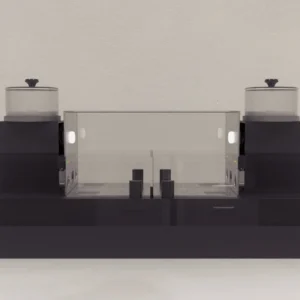$1,400.00
The Rodent Social Approach-Avoidance Test is a behavioral test used to measure an animal’s social behavior and tendencies toward social interaction or avoidance. In this test, a subject rodent is placed in an arena with a social target (typically another rodent) and its behavior toward the target is recorded and analyzed. The test provides information about social behavior, such as approach, social interaction, and avoidance behavior toward the target. This information can be useful in studying social behavior and cognition, as well as in evaluating potential treatments for social impairments.

MazeEngineers empowers preclinical neuroscience research with meticulously designed, customizable behavioral apparatuses. From manual classic mazes to fully automated smart systems, we provide the tools scientists need to capture high-quality, reproducible data for studies on learning, memory, anxiety, and depression.


bool(false)

bool(false)
Rectangular or circular. |
The size may vary depending on the species of rodent |
40×40 cm or 100×100 cm |
The Rodent Social Approach-Avoidance Test requires a specific type of arena to effectively measure social behaviors of rodents. Here’s a breakdown of the typical features of such an arena:
Environmental Controls
Adaptation Area
Size and Shape
Compartments
Materials
Visual Contact
Entry/Exit Points
There should be controlled entry and exit points to easily introduce and remove rodents without causing stress or disturbance to the ongoing observations.
Video Monitoring
The arena should be equipped with cameras or observation windows. Cameras are typically placed above the arena to capture an overhead view that allows for detailed behavioral analysis, including tracking movement and interactions.
| Dimensions | 40 × 40 cm |
|---|
There are no questions yet. Be the first to ask a question about this product.